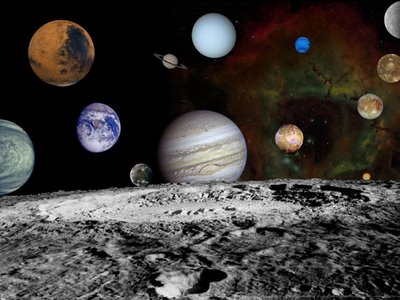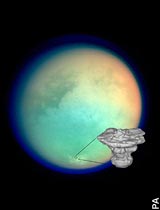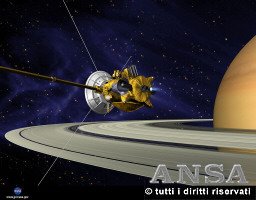This mesmerising video on youtube takes us the farthest man has ever seen into space. Taken by hubble, the view simply fills the viewer with awe at His creation. There's so, so much more to discover, see, explore. The space above is vast beyond comprehension.
Sunday, October 29, 2006
The Singlemost Important Image Ever Taken By Humanity
This mesmerising video on youtube takes us the farthest man has ever seen into space. Taken by hubble, the view simply fills the viewer with awe at His creation. There's so, so much more to discover, see, explore. The space above is vast beyond comprehension.
Monday, September 25, 2006
Passion and Money Can Buy You Anything

Anousheh's space sojourn is a fascinating event. I've sent her a question through Google, hope its picked up to put forward to her. unluckily I can't watch the live chat. Waiting to catch the recorded show. Anousheh's passion and money have helped her acheive a rare feat, which only a v, v, few chosen get.
Sunday, August 27, 2006
Solar System Montage - Thanks NASA

Found this breathtaking view on a NASA page.
This montage of images taken by the Voyager spacecraft of the planets and four of Jupiter's moons is set against a false-color Rosette Nebula with Earth's moon in the foreground.
Voyager provided the of images Jupiter, Saturn, Uranus, Neptune and many of their moons.The renamed Voyager Interstellar Mission searches for the edge of the solar wind influence (the heliopause) and exits the solar system. A shortened list of the missions discoveries of Voyager 1 and 2 include: Uranian and Neptunian magnetospheres (magnetic environments caused by various types of planet cores); 22 new satellites including three at Jupiter, three at Saturn, 10 at Uranus, and six at Neptune; active volcanism on Io; active geyser-like structures and an atmosphere on Triton; Auroral Zones (where gases become excited after being hit by solar particles) on Jupiter, Saturn and Neptune; rings at Jupiter; and, large-scale storms on Neptune, originally thought to be too cold to support such atmospheric disturbances.
ps: found two comments for my first post....feels great....awestruck by how a blog can bring starngers together...this can do so much to promote world peace.
Thursday, July 27, 2006
Titan - Saturn Moon

Images of the Saturn moon - Titan - show meandering river channels, icy cobbles, dark ovals suggestive of lakes and massive cumulus clouds that form in a similar way to tropical clouds on Earth.
Although Titan has an atmosphere that is tantalisingly similar to that of primordial Earth, its atmosphere is 10 times thicker and much cooler at -179C, so that it takes 29.5 Earth years for the atmosphere to respond to the seasons! Titan is also smaller and lacks oceans, which are central to Earth's climate. As a result, its weather is quite alien to ours.
Methane rain falls on the surface. The strongest storms occur when methane humidity in the middle atmosphere tops 80 per cent, producing updraughts as fast as 45mph that create thick clouds. Large hydrocarbon raindrops then fall, delivering up to 250lb of liquid on each square yard of Titan's surface, around 3in per hour, carving out its rugged features.
Scientists reported the first widespread evidence of giant hydrocarbon lakes near Titan's frigid north pole after Cassini, flew within 590 miles of the moon. Researchers counted about a dozen lakes six to 62 miles wide. Some were connected by channels and others had tributaries. Several were dried up; the ones that contained liquid were most likely a mixture of methane and ethane.
Titan's atmosphere is mostly nitrogen with a dash of methane and an intriguing batch of "organic molecules" that are vital to life. Although that does not mean that Titan supports life, it is viewed by some astrobiologists as a place that might be much like early Earth and therefore could yield clues about how life forms.
Saturn Moon May Have Lakes

The Cassini space probe has found a huge methane gas lake on the largest and most mysterious moon of Saturn. The find could make Titan the only place outside Earth known to have lakes, scientists say.
The lake near Titan's south pole is about the size of Lake Ontario. Scientists think the lake may have been produced by a volcanic eruption or the impact of an asteroid.
The Cassini-Huygens space probe began its sweep of Titan in January 2005, sending back the first data on an atmosphere resembling Earth's when life began. The probe was the first man-made device to encounter the moon - and the first to orbit Saturn.
Dense mists envelope Titan. Titan is the only moon in the Solar System with a dense atmosphere - believed to be similar to the one initially formed when the Earth came into being.
The probe will scan Saturn's stormy atmosphere, molten core and mysterious rings, believed to be the remains of pulverised moons, asteroids and comets.
Link
Subscribe to:
Posts (Atom)